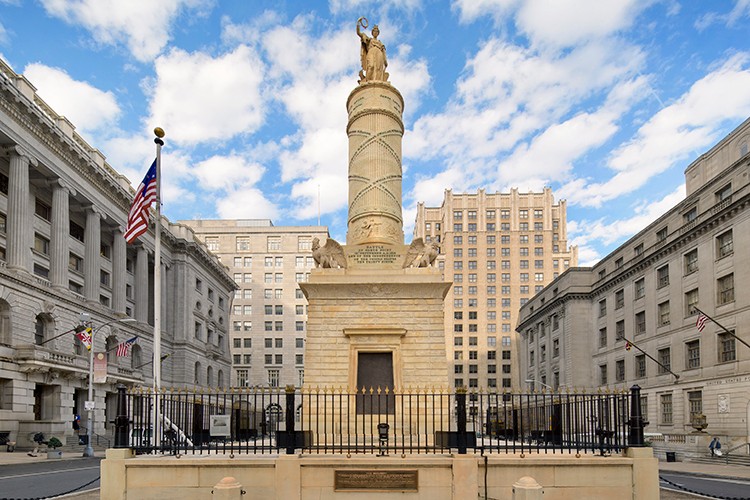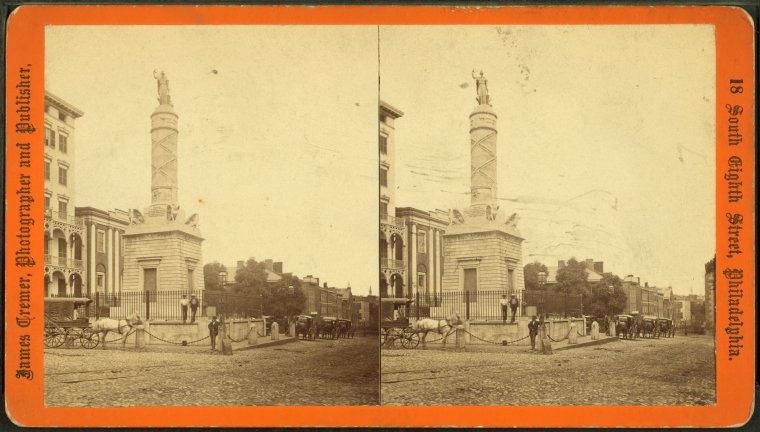Baltimore Battle Monument
Introduction
Text-to-speech Audio
Images
Baltimore Battle Monument

Baltimore Battle Monument

Backstory and Context
Text-to-speech Audio
The Battle of Baltimore occurred during the War of 1812, after the attack on Washington D.C. in 1814.1 While the attack on D.C. was happening, Baltimore began to prepare for the British to attack there too. Over a mile of barricades were present north from the harbor for defense against an attack from the bay. Along with this, several masts were positioned throughout the main entrance to the inner harbor. Fort McHenry here was the essential fort for the country’s protection.
On September 12 the British arrived at North Point close to the opening of the Patapsco River close to Baltimore. Nearly 4,500 British soldiers arrived here and started the 11 mile journey to Baltimore. At the same time the British warships travelled up the Patapsco River to Fort McHenry and the other sites of protection near the harbor. The ships attacked Fort McHenry for 25 hours but to no avail; the fort’s commander, Major George Armistead and others there refused to surrender. Meanwhile, the troops at North Point got into a conflict that is now known as the Battle of North Point. The British suffered many losses here, however they did arrive at Baltimore’s protective barricades that had 15,000 Americans on site. Despite their arrival here, when the British discovered the British loss at Fort McHenry they chose to leave.2
The architecture of the monument is a mix between Egyptian and Classical aspects. The bottom of it is mainly in the Egyptian design having 2 Black doors that resemble that of a “cenotaph” or a sarcophagus. The columnn resembles the Classical Roman style of a fasces that stands for unity. This monument and the Washington Monument resulted in President John Quincy Adams to call Baltimore “the Monumental City” in 1827. During this time period Baltimore was the only American city to have monuments like these two. It was due to this that Baltimore was called “the Monumental City,” and it still carries this nickname.3

